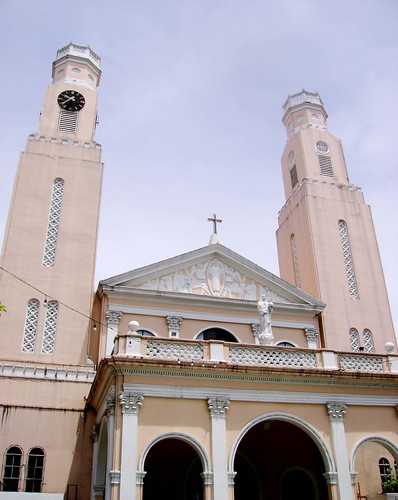 [/caption]
[/caption]With all the amazing stories I heard about this church since I was a child and its close proximity to where we live – believe it or not this is the first time I visited Paco church. I remember passing along the place many many times during my secondary school, having spent some of my tambay years in the surrounding area but for some reason I never visited the iglesia.
Just like all stone church it started as straws and bamboos. What's fascinating about the church is that it’s probably the only church that endured the most devastation in Philippine history and that in its place still stands an inspiring place of worship is truly a miracle. It was said to have been destroyed during the Chinese insurrection in 1602, the English occupation in 1782, a massive typhoon, earthquakes of 1852 and 1881.
The coming of the new century was not less forgiving, on 5 February 1899, during a violent encounter between the Filipino revolutionaries and the Americans. The imperialist Americans bombed and shattered the church in to pieces. This uncontrolled disregard for Filipino churches by the Americans would carry on during the Japanese occupation, when most of the destruction in the capital was caused by their attempt to recapture it.
An interesting side story here is that the Iglesia of San Fernando de Dilao was actually formed to serve the growing Japanese residents of old Paco, Dilao was said to have originated from the yellowish tinge of their skin. It’s hard to picture that a strong Japanese community once exist in Paco, “many were samurai”; some were even utilized in the conquest of Mindanao. Some of these isolated Japones folks were in Manila even before the Spanish conquest, it increased its number in the early 1600’s when “refugees” from Imperial Japan found a safe haven in Manila. The Franciscans were designated to preach to the Japanese in Dilao, the Jesuits then went on to take San Miguel – preaching to the Japanese in the south bank of the Pasig River. This ethnic group became so immense that they became a threat to the Spanish government – the Spaniards subsequently began deporting the Japanese to their native land.
Today’s Paco Church is built induring the American era (1931), which should explain its neo-classical inspired front. Its twin bell tower is impressive; it also has a “terraced arcaded portico” over the main entrance.



I see mudejar influences in the towers. Was this the original design of Paco church?
ReplyDeleteNot really, ETA. It's just that you're under the influence. You're seeing double. Or triple. Or quadribble. Did you read that? Dribble. That's the activity that's been going on inside the recesses of your almost hollow cerebral cortex. So no. There are no such influences; you're just under the influence.
ReplyDeleteHave a swell day.